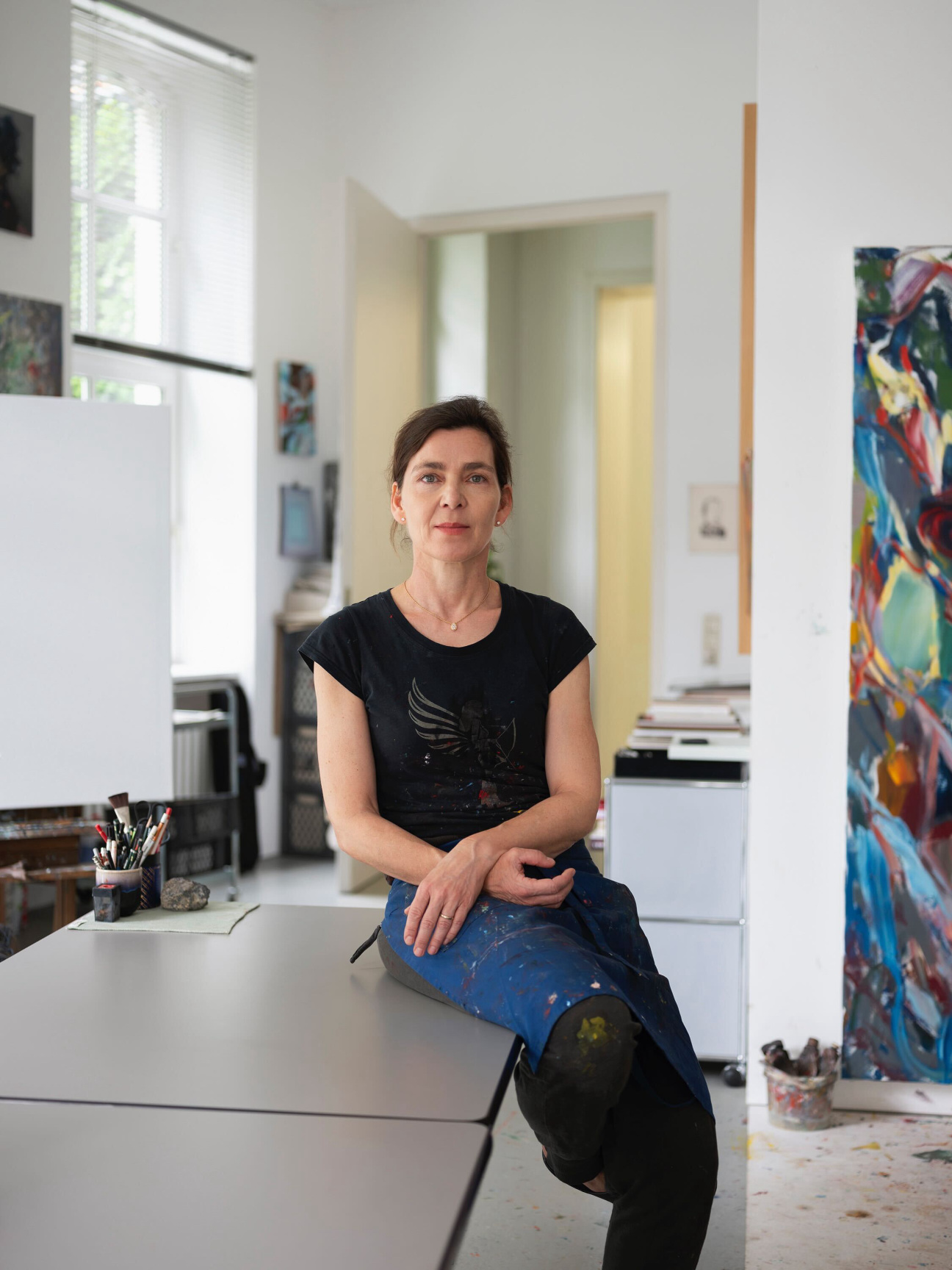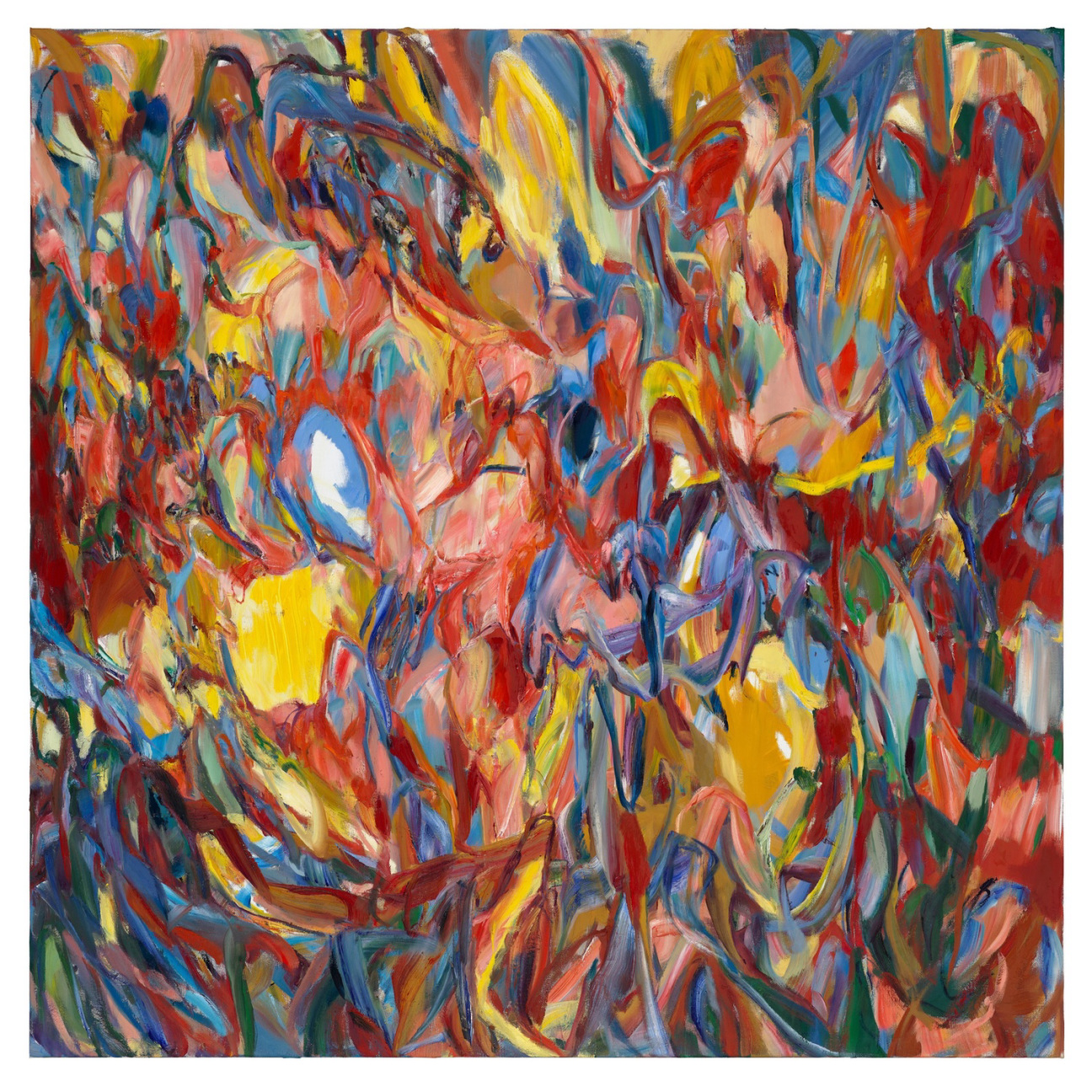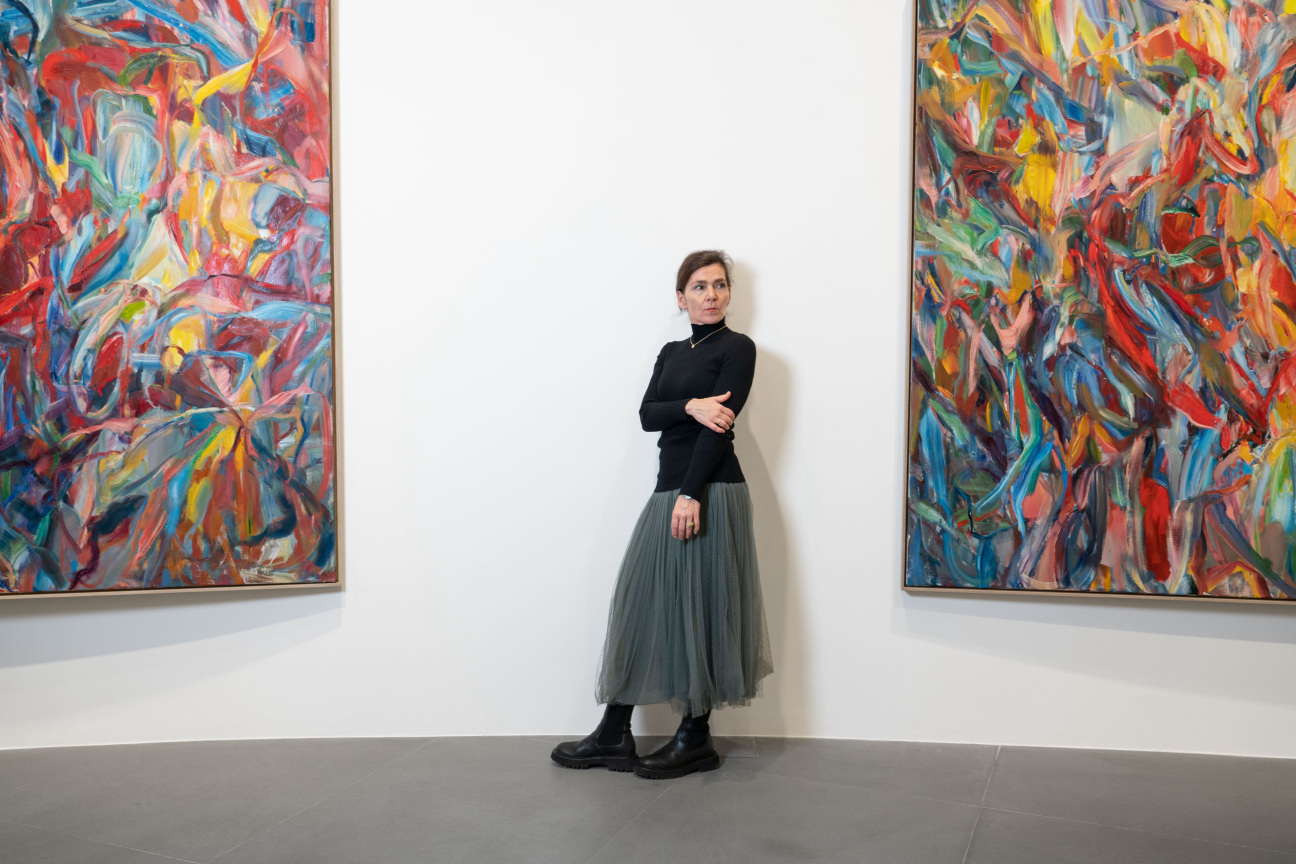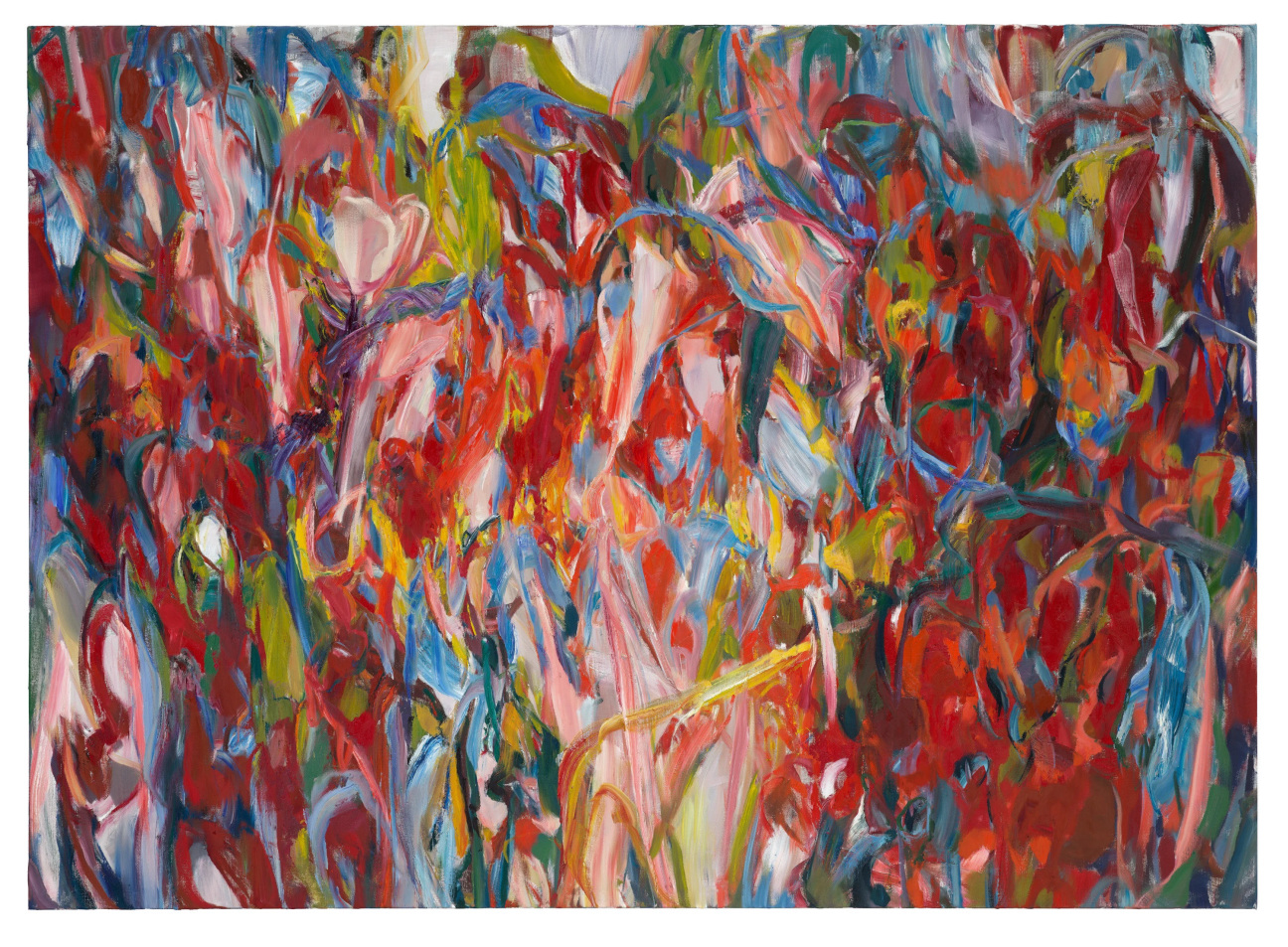
The German artist Sabine Moritz has become known over the past decade for her "psychological landscapes"—improvisational, instinctively executed paintings done without preparatory sketches.
In "Frost," her first exhibition on the West Coast, Moritz unveils 20 new canvases at Gagosian Beverly Hills that capture the raw emotional qualities of color, along with a range of textures, including impasto. Many of the paintings are ekphrastic, with titles that reference lines of poetry, as well as Moritz's own memories of time and place.
The interplay of color and texture sometimes suggests the possibility of figures emerging from the abstractions. The show's title, evoking a state that's neither liquid nor solid, comes from the similarly liminal state in which these figures seem to exist.
Below, Moritz shares some of the inspirations behind the series, on view through Dec. 21, the creative dialogue she has with her partner, the artist Gerhard Richter, and why it’s important to have a studio with “a big door you can always close.”

CULTURED: How would you describe the body of work that you’re showing in Los Angeles?
Sabine Moritz: It feels like a natural development of my work. When I am painting, a question appears, and I just try to find answers. Of course, I [also] think about the place and space. I study the rooms [of the gallery,] and then I make works that make sense for the show.
CULTURED: What elements of LA were you thinking about?
Moritz: Mostly about the dichotomy between ocean and city. The ocean is a border, kind of like the end of the world. Maybe it’s not so predominant when you are in town, but in your mind, you know the ocean is there, always.
CULTURED: How does that dichotomy manifest in these works?
Moritz: Maybe in the titles. One painting is titled Pacific (LA) and another painting is titled Pacific (San Francisco), because you feel the tension between the two cities.

CULTURED: The exhibition is titled "Frost." How did you land there?
Moritz: Sometimes I have a title immediately, and sometimes it’s a longer process. This time, I looked for what functions in German and English—something clear, but also ambivalent in its meanings. In the show, I have four little paintings that are titled Frost 1 through 4. Frost is a state—a period between coldness and warmth. It can also give you a moment to stop, become quiet, and watch. And in political contexts, sometimes it's good to have a period where nothing really happens.
CULTURED: You've moved away from figurative work in the last 10 years, in favor of abstractions that you say you don’t premeditate. What do you attribute this shift to?
Moritz: Sometimes when I start, I have an idea, and the idea mostly doesn't work. And then I react to that. The way I create is like, “question, answer, question, answer.” It's really strange, because I never know in which direction the work will develop. I’ll have colors which are sometimes—fighting is not the best word—but acting on each other. I don’t think it’s good to work like this, but I'm very attached to it now.
I have begun to integrate figures again, but they’re dreamlike, not real. It’s funny—sometimes people come to the studio and say, “Oh, I see someone.” I say, “But there's nothing to see. No figures, no objects.” These paintings with figures will be shown for the first time in LA.

CULTURED: Is there anything that your husband Gerhard Richter ever said to you that stays in your head when you're working?
Moritz: Not really. But I think a lot of artists are in a special, deeper dialogue together.
CULTURED: Did you ever find being with a fellow artist to be overwhelming?
Moritz: Yes, of course. But it's also very practical—because you can share so many things. Like paint. You also have a deeper understanding when you speak. I feel I’m in a period of creative freedom now.
CULTURED: There was a period where you shared a studio, right?
Moritz: Not really. That would be totally toxic—it would block you creatively. It's always important to have a huge door, which you can close, and an area where there's nobody else.
CULTURED: That's freedom right there.










 in your life?
in your life?

